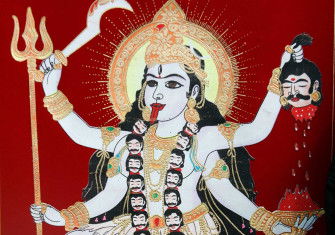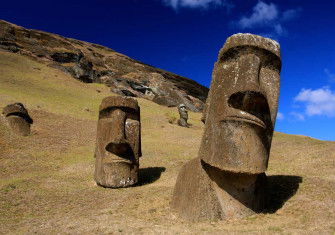Ifá Divination
Patterns in dust reveal the right verses to live by.

Ifá divination has been central to the culture of the Yoruba people in south-western Nigeria for about 2,500 years. It is based on the teachings of a Yoruba sage named Ọrunmila, also known as Ifá.
Some see Ọrunmila as a primordial divinity (ara orun), sent directly to earth by Olodumare (‘the omnipotent source of all creation’) so that he could impart wisdom. However, many consider Ọrunmila to be a historical figure, born in c.500 BC in Ilé-Ifè, one of Nigeria’s earliest and greatest cities. As such, Ọrunmila is not considered a god, but an orisa, a long dead person, venerated because of their important contribution to the life of the Yoruba people. There are several orisas, each with their own attributes. Ọrunmila is the orisa of wisdom and divination.
The late Nigerian philosopher Sophie Olúwọlé (1935-2018) sought to draw parallels between Ọrunmila and Socrates. Just as Socrates left no writings of his own (his ideas are known to us only through Plato and Xenophon), so the philosophy of Ọrunmila was handed down as Yoruba oral tradition. Olúwọlé highlights the fact that both Socrates and Ọrunmila value virtue over material wealth, each seeking to assert the importance of knowledge and logic and to encourage the debate of ideas.
Ọrunmila’s thoughts, beliefs and even mathematical formulae form a corpus known as the Odu Ifá, which is employed when important decisions need to be made. The Odu Ifá consists of 256 parts, each subdivided into several verses (ese). Each ese has an equal and opposite meaning.
The carved agere Ifá shown here is the receptacle on which the Ifá priests keep their consecrated palm nuts (ikin). It serves a purpose similar to a tabernacle in Christian churches, where the sacred host is kept, or an aron kodesh (holy ark), where the Torah scrolls are kept in a synagogue. In the Ifá divination process, the ikin are held by the priest in their left hand and repeatedly scooped up or cast by the right. This is the most important part of Ifá divination. If one or more ikin remains in the left hand, the priest will make one or two vertical lines on a divination board (opon), the surface of which is covered in wood dust created by termites. This process is repeated several times and the resulting pattern of marks in the dust will correspond to specific ese signatures within the Odu Ifá. These ese are then relayed by the priest in poetic chant to the supplicants present.
This agere Ifá shows an Ifá priest alongside representations of typical requests made of Ifá divination: riches, shown by prisoners of war; longevity, characterised by a cockerel pecking a snake, which is swallowing a tortoise; and family, represented by a mother and a child.






